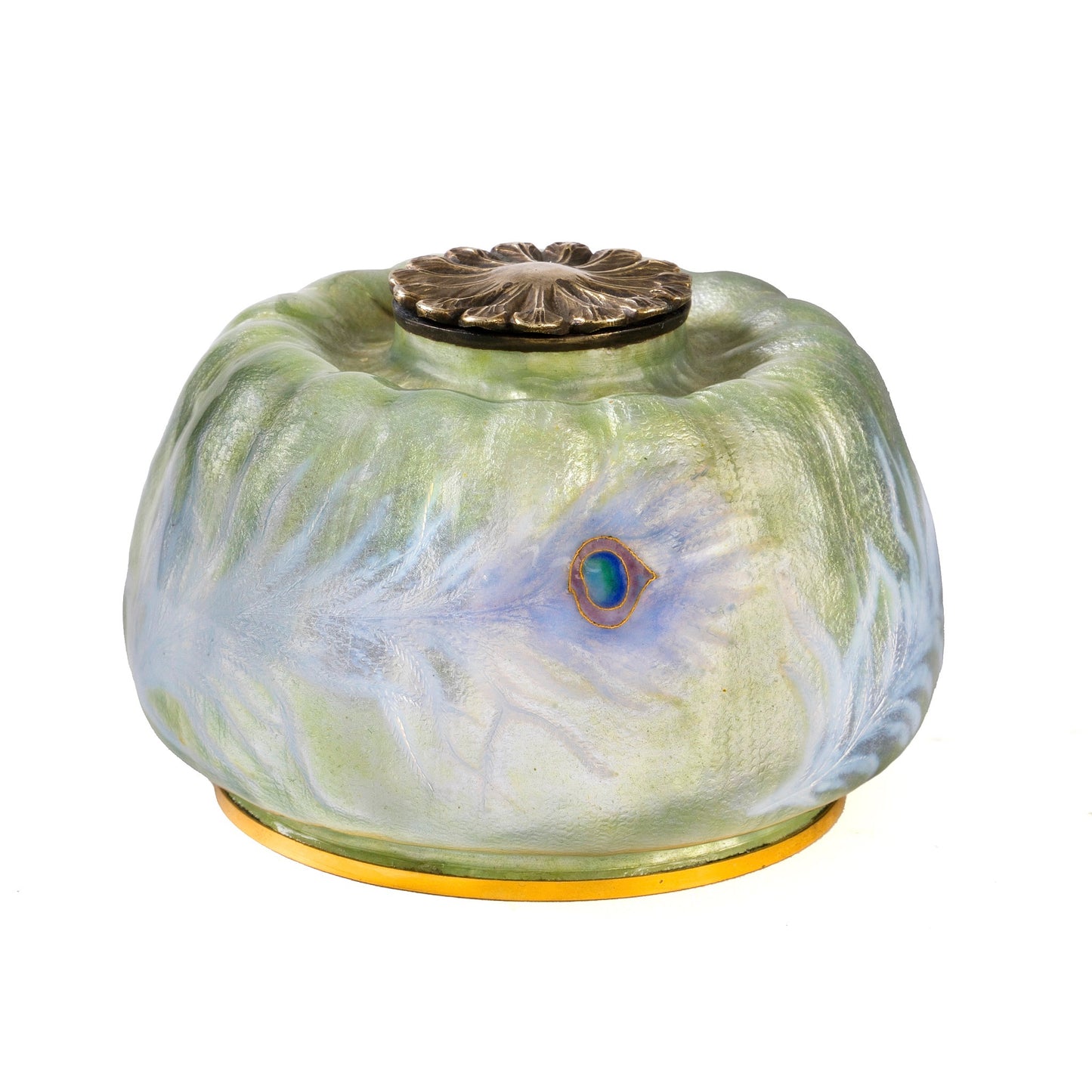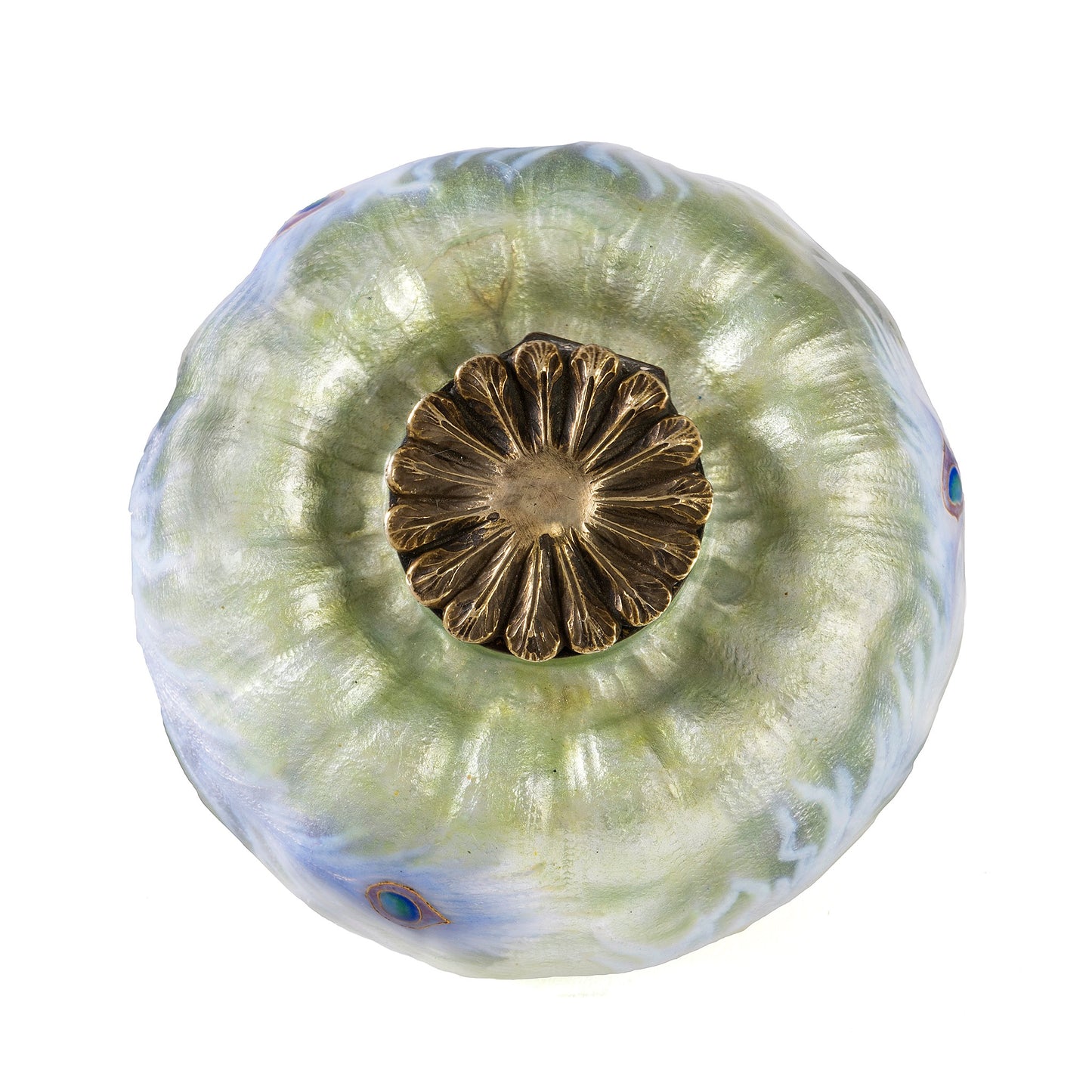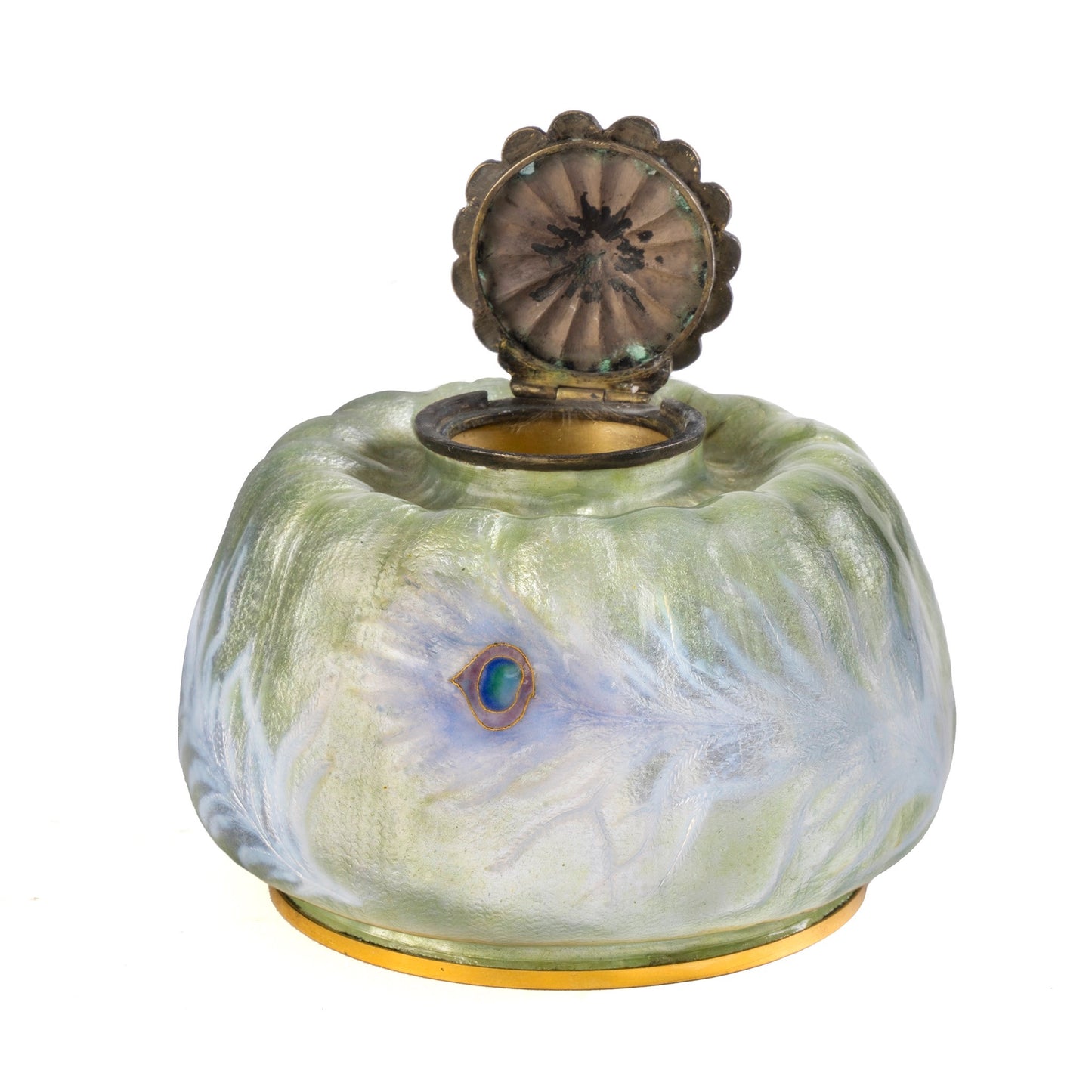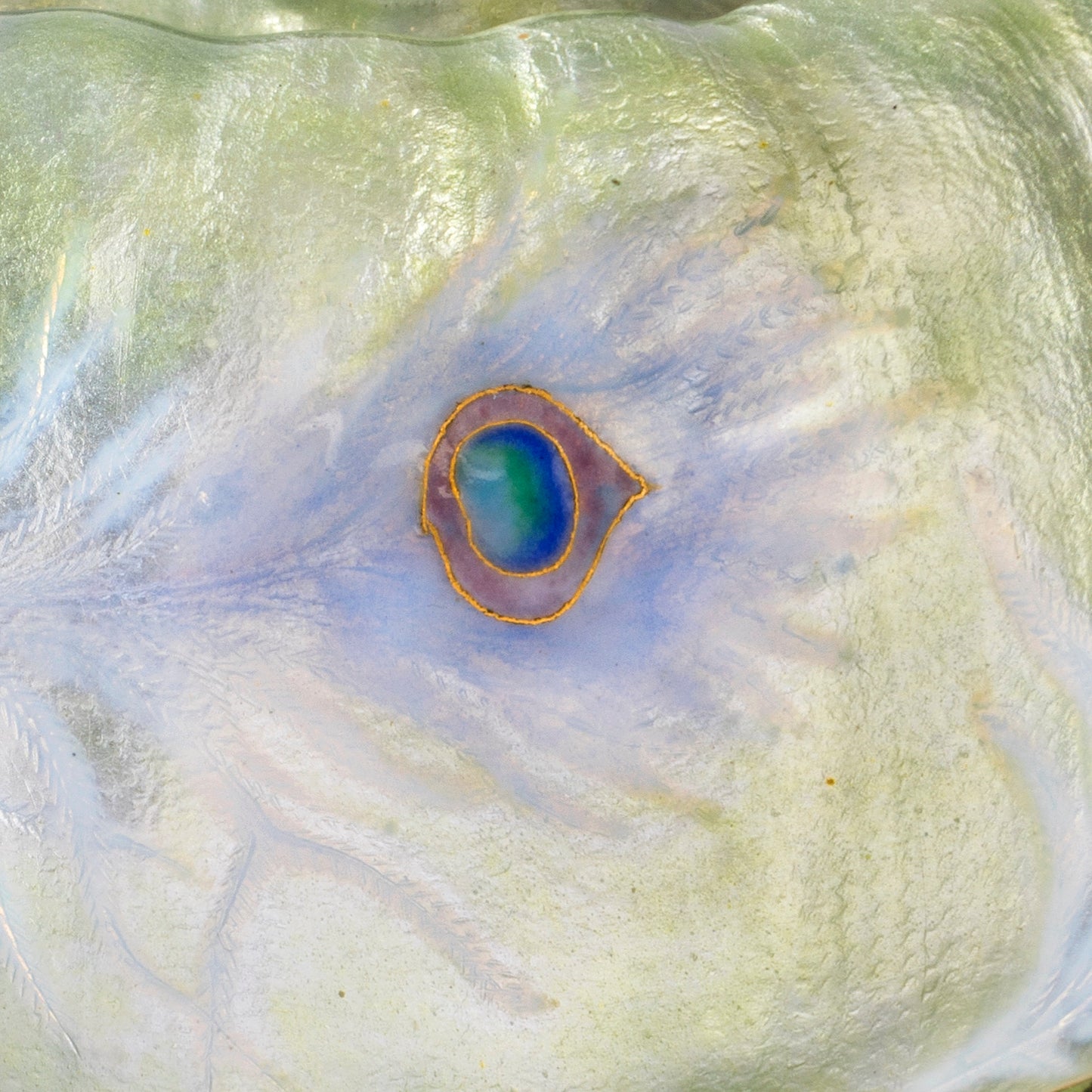Eugène Feuillâtre "Pavot" Inkwell
Item #: S-21164
Artist: Eugène Feuillâtre
Country: France
Circa: 1900
Dimensions: 2.25" height, 3.5" diameter
Materials: Enamel, Silvered Metal, Gilt Metal
Signed: impressed Feuillâtre
Exhibition History: Examples of this inkwell can be found in the permanent collections of Musée d’Art et d’Histoire, Geneva (inv. no. E 01500), Musée des Arts Décoratifs, Paris (inv. no. 8746), and Museum für Kunst und Gewerbe, Hamburg (inv. no. 1966.1).
Salon des Artistes français, 1898.
Literature: L. Bénédite, et. al., "Exposition Universelle de 1900: Les Beaux-Arts et les Arts Decoratifs," Gazette des Beaux-Arts, Paris, 1900, p. 510 (for a related example).
H. Frantz, "E. Feuillatre, Emailleur," L’Art Décoratif, no. 28, Paris, January 1901, p. 166 (for a related example).
C. Saunier, "Céramique, Verrerie, Émail," L’Art Décoratif, no. 34, Paris, July 1901, p. 155 (for a related example).
R. Marx, La Décoration et les Industries d'Art à l'Exposition Universelle de 1900, Paris, 1901, p. 95 (for a related example).
M. P. Verneuil, "L'Émail et les Émailleures," Art et Décoration, no. 2, Paris, February 1904, pp. 37-39 (for a related example).
M. Rheims, L'Objet 1900, Paris, 1964, p. 34, no. 18 (for a related example).
P. Garner, ed., The Encyclopedia of Decorative Arts 1890-1940, New York, 1978, p. 95 (for a related example).
Die Jugendstil - Sammlung: Band 1: Künstler A-F, exh. cat., Museum für Kunst und Gewerbe, Hamburg, 1979, pp. 465-466, cat. no. 655.
A. Duncan, The Paris Salons 1895-1914, Volume V: Objets d'Art & Metalware, Suffolk, 1994, p. 252 (for related examples).
G. de Bartha, L'Art 1900: La Collection Neumann, New York, 1994, p. 128 (for a related example).
J. T. Busch and C. L. Futter, Inventing the Modern World: Decorative Arts at the World’s Fairs, 1851-1939, exh. cat., Carnegie Museum of Art, Pittsburgh, 2012, p. 196, no. 9 (for a related example).
Item #: S-21164
Artist: Eugène Feuillâtre
Country: France
Circa: 1900
Dimensions: 2.25" height, 3.5" diameter
Materials: Enamel, Silvered Metal, Gilt Metal
Signed: impressed Feuillâtre
Exhibition History: Examples of this inkwell can be found in the permanent collections of Musée d’Art et d’Histoire, Geneva (inv. no. E 01500), Musée des Arts Décoratifs, Paris (inv. no. 8746), and Museum für Kunst und Gewerbe, Hamburg (inv. no. 1966.1).
Salon des Artistes français, 1898.
Literature: L. Bénédite, et. al., "Exposition Universelle de 1900: Les Beaux-Arts et les Arts Decoratifs," Gazette des Beaux-Arts, Paris, 1900, p. 510 (for a related example).
H. Frantz, "E. Feuillatre, Emailleur," L’Art Décoratif, no. 28, Paris, January 1901, p. 166 (for a related example).
C. Saunier, "Céramique, Verrerie, Émail," L’Art Décoratif, no. 34, Paris, July 1901, p. 155 (for a related example).
R. Marx, La Décoration et les Industries d'Art à l'Exposition Universelle de 1900, Paris, 1901, p. 95 (for a related example).
M. P. Verneuil, "L'Émail et les Émailleures," Art et Décoration, no. 2, Paris, February 1904, pp. 37-39 (for a related example).
M. Rheims, L'Objet 1900, Paris, 1964, p. 34, no. 18 (for a related example).
P. Garner, ed., The Encyclopedia of Decorative Arts 1890-1940, New York, 1978, p. 95 (for a related example).
Die Jugendstil - Sammlung: Band 1: Künstler A-F, exh. cat., Museum für Kunst und Gewerbe, Hamburg, 1979, pp. 465-466, cat. no. 655.
A. Duncan, The Paris Salons 1895-1914, Volume V: Objets d'Art & Metalware, Suffolk, 1994, p. 252 (for related examples).
G. de Bartha, L'Art 1900: La Collection Neumann, New York, 1994, p. 128 (for a related example).
J. T. Busch and C. L. Futter, Inventing the Modern World: Decorative Arts at the World’s Fairs, 1851-1939, exh. cat., Carnegie Museum of Art, Pittsburgh, 2012, p. 196, no. 9 (for a related example).























